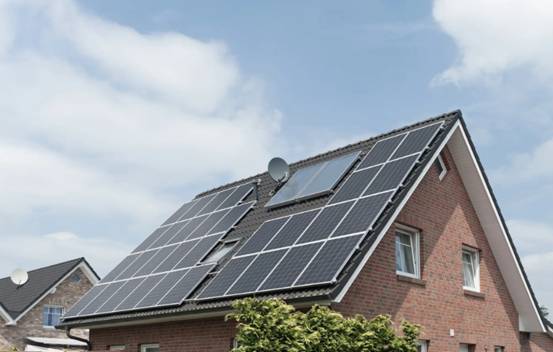Before purchasing a solar system, choosing the right solar modules takes up a large part of the planning phase. Performance is often considered the main criterion for comparing the different solar modules. But what is the nominal power, and what is the difference from the actual power? And what factors influence the performance of solar modules? Today we clarify all these questions.
Performance of solar panels
In general, the electrical output of solar modules is measured in watts (W). The electrical power output of the solar modules is given in watt peak (Wp). This value describes the maximum output that a solar module can achieve under ideal conditions. This is determined under defined test conditions in the laboratory, which we will present to you in more detail later.
The peak power is, therefore, the peak power of a solar module and is often referred to as the nominal power. Using this value is to make solar modules of different types and manufacturers comparable.
What does power tolerance mean?
The fact that the real conditions often deviate from those in the test laboratory also affects the actual performance of the solar modules. This is why small differences exist between the specified nominal and actual power.
Solar modules currently have an average rated output of 50 to the 350-watt peak. However, as you have already learned before, the nominal power is more of a guideline and a rough orientation concerning the maximum power, as certain deviations must be expected. These deviations are called performance tolerances.
There can be performance tolerances in both directions – reduced and increased performance are possible and therefore referred to as negative or positive performance tolerance. As a rule, this power tolerance is no more than +/- 3 percent of the nominal power of the solar module.
Expressed in numbers, this means: A solar module with a rated output of 380-watt peak generally generates at least 368.6 watts of power, with a positive power tolerance even up to 391.4 watts. In the meantime, many manufacturers indicate a positive performance orientation. In these cases, the PV modules usually have more power than is specified for the nominal power. Concerning the above example, the solar module with a positive rated output of 380-watt peak would have an actual output of up to 391.4 watts.
Determining the nominal power of solar modules
As mentioned, the nominal power of a solar module is determined in the laboratory under certain constant conditions. The following specifications for determining the nominal power are observed:
- Ambient temperature of 25 degrees Celsius
- Insolation/irradiance of 1000 watts/m²
- Sunlight spectrum of 1.5
How does the performance of mini solar panels develop when these conditions change? In principle, more solar radiation also leads to higher – and lower – performance values. At ambient temperature, performance development is the opposite since high temperatures lead to lower performance values. This is because the efficiency decreases with increasing heat.
What does efficiency mean?
The efficiency indicates the ratio between the energy supplied and the energy emitted. This percentage value describes how much incident energy the solar modules can convert into electrical energy. Efficiency is another key figure for the performance of portable solar panels for camping and also depends on the following factors.
Factors influencing the performance of solar modules
You have now learned the most important terms related to the performance of solar panels and already know that many different and individual factors influence this. We have briefly summarized the most important influencing factors:
The site:
If the project location and latitude are known, more realistic statements can be made about the actual performance of solar modules. With the help of these values, global radiation can be determined, among other things. This represents an important component for the yield calculation of PV systems. It describes the solar radiation that hits a square meter of the horizontal receiving area within a certain period.
The pitch of the roof:
The pitch of the roof also influences the performance of the system. The optimal angle of inclination for solar modules in Germany is approx. 30 to 35 degrees.
The module orientation:
The orientation of the solar modules has a major impact on the efficiency of the photovoltaic system. In the past, a southern orientation was recommended above all – today, systems are increasingly being aligned to the east or west to increase the yield in the morning or evening hours.
The shading:
Shading PV modules can significantly impact the system’s overall performance and should be avoided. Therefore, the year-round course of shadows should be determined during the planning of the solar panels system to avoid large-area shadows – for example, from trees or other surrounding buildings. If these cannot be prevented, module optimizers can be a solution to increase the yield of the solar system.
The module type:
Of course, the type of module also has a significant impact on the performance of the solar modules. The manufacturing processes and the carrier materials used play a particularly important role here. Monocrystalline cells are currently the most commonly used because they are much more efficient than polycrystalline cells.
The performance degradation:
This describes the decrease in the performance of solar modules during the period of use. Reasons for this can be, for example, wear and aging of the installed module components.
Conclusion
The performance of PV modules is an important indicator when choosing suitable components for your solar system. Today we showed you what you could pay attention to when optimizing the performance of your solar modules. For your home energy needs when you’re not using solar power, you might want to visit this website to find the best electric company with the cheapest electricity rates in Texas.







